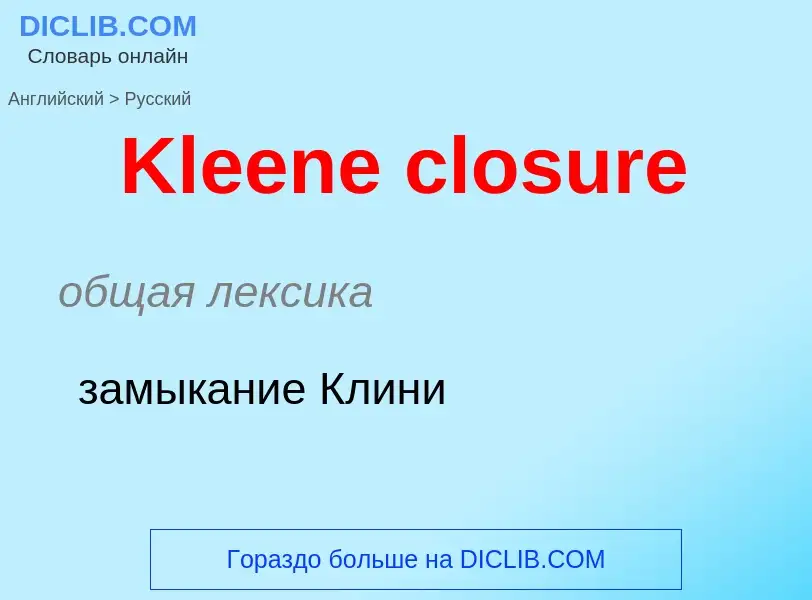Translation and analysis of words by ChatGPT artificial intelligence
On this page you can get a detailed analysis of a word or phrase, produced by the best artificial intelligence technology to date:
- how the word is used
- frequency of use
- it is used more often in oral or written speech
- word translation options
- usage examples (several phrases with translation)
- etymology
Kleene closure - translation to russian
общая лексика
замыкание Клини
[ʌp'vælju:]
глагол
общая лексика
повысить стоимость
цену
повысить курс (валюты)
Wikipedia
In mathematical logic and computer science, the Kleene star (or Kleene operator or Kleene closure) is a unary operation, either on sets of strings or on sets of symbols or characters. In mathematics, it is more commonly known as the free monoid construction. The application of the Kleene star to a set is written as . It is widely used for regular expressions, which is the context in which it was introduced by Stephen Kleene to characterize certain automata, where it means "zero or more repetitions".
- If is a set of strings, then is defined as the smallest superset of that contains the empty string and is closed under the string concatenation operation.
- If is a set of symbols or characters, then is the set of all strings over symbols in , including the empty string .
The set can also be described as the set containing the empty string and all finite-length strings that can be generated by concatenating arbitrary elements of , allowing the use of the same element multiple times. If is either the empty set ∅ or the singleton set , then ; if is any other finite set or countably infinite set, then is a countably infinite set. As a consequence, each formal language over a finite or countably infinite alphabet is countable, since it is a subset of the countably infinite set .
The operators are used in rewrite rules for generative grammars.

